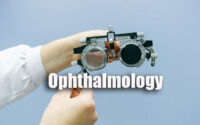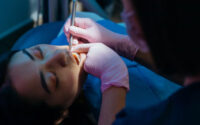Geriatric Medicine Objective Question
Geriatric Medicine Objective Question Papers Free Pdf is available. We have given Geriatric Medicine Objective Question Papers in a PDF format. So that the applicants can get the Clinical Geriatric Medicine Objective Question Papers for practice purpose. We have also provided solutions for the Geriatric Medicine Objective Question Papers. Therefore, Applicants can check the answers with actual solutions while practicing Geriatric Medicine Objective Question Papers. Here we are providing Objective Question Papers for Geriatric Medicine Exam.

Objective Question on Geriatric Medicine
1. Aortic stenosis presenting with symptoms at 65 years of age is more likely to be –
(1) Degenerative and calcific changes on a congenital bicuspid aortic valve
(2) Rheumatic Valvular Disease
(3) Radiation
(4) Hypertension
2. Which statement about Antibiotic stewardship is FALSE?
(1) Prospective audit of antimicrobial use
(2) Formulary restriction
(3) Preauthorization
(4) Responsibilities of Infectious disease specialist alone
3. A pulmonary function test of a seventy-year-old male patient with COPD reveals FEVi/FVS as 0.65 and FEV; as 60%. According to the Global Initiative for Chronic Obstructive Lung Disease (GOLD) criteria, his severity of airflow obstruction is…………..
(1) Mild
(2) Moderate
(3) Severe
(4) Very Severe
4. Relapsing polychondritis shows all of the following conditions, EXCEPT –
(1) Myelodysplastic syndrome
(2) Primary biliary cirrhosis
(3) Scleroderma
(4) Spondyloarthritis
5. Which intervention does not reduce adverse drug reactions?
(1) Frequent review of medication
(2) “Start low, go slow”
(3) Encourage use of over-the-counter drugs
(4) Minimizing the number of drugs used
6. The following hormones remain unchanged with aging except –
(1) Luteinizing hormone (males)
(2) Thyroxine
(3) Epinephrine
(4) Insulin
7. Pharmacologic interventions to delay ageing have shown positive results in experimental studies with-
(1) Corticosteroids
(2) Sperminide
(3) Vitamin D
(4) Thyroxine
8. A 66-year-old male is admitted with ascites and paracentesis is done. The results show a TLC of 300 leukocytes/WL with 35% polymorphonuclear cells. The peritoneal albumin level is 1.4g/dL, protein is 2.0g/dL, and triglycerides are 320mg/dL. Peritoneal cultures are pending. Serum albumin is 2.9g/dL_. Which of the following is the most likely diagnosis?
(1) Congestive heart failure
(2) Peritoneal tuberculosis
(3) Peritoneal carcinomatosis
(4) Bacterial peritonitis
9. 65-year-old woman is seen in clinic for evaluation of dyspnoea. Which of the following physical findings would fit the diagnosis of pulmonary arterial hypertension?
(1) Elevated neck veins, normal S1 and S2, I/VI diastolic blowing murmur heard at the right upper sternal border.
(2) Elevated neck veins; loud S2; II/VI systolic murmur left lower sternal border
(3) Elevated neck veins; loud, fixed, split S2; IM1/VI systolic murmur left lower sternal border
(4) Elevated neck veins; expiratory splitting of S2, II/VI harsh systolic murmur left upper sternal border
10. Age – Associated changes in Vasculature include all, except –
(1) Increased intimal thickness
(2) Increased collagen
(3) Increased elastin
(4) Increased vascular stiffness
11. Elevated levels of the following indicates liver disease, except –
(1) 5’- nucleotidase
(2) Conjugated bilirubin
(3) Unconjugated bilirubin
(4) ALT & AST
12. Use of which of the following antibiotics is least likely to lead to development of Clostridium difficile-associated disease?
(1) Ceftriaxone
(2) Clindamycin
(3) Piperacillin/tazobactam
(4) Moxifloxacin
13. There are several theories to explain the phenomenon of ageing. “Disposable Soma Hypothesis” belongs to which category of theory?
(1) Evolutionary
(2) Molecular
(3) Cellular
(4) Systemic
14. Following facts about falls in elderly are correct, except –
(1) Over one third of persons older than 65 year fall each year
(2) 75% of these patients have recurrent falls
(3) Falls are responsible for two thirds of accidental deaths
(4) 20% to 30% of those who fall suffer moderate to severe injuries such as lacerations, hip fractures, or head trauma
15. The original Constraint-Induced Movement Therapy (CIMT) concept included –
(1) Therapy is provided for 2 weeks
(2) Therapy is provided for 4 weeks
(3) Therapy is provided for 6 weeks
(4) Therapy is provided for 8 weeks
16. All are superficial mycosis except –
(1) Tinea versicolor
(2) Entomohthoromycosis
(3) Piedra
(4) Tinea nigra
17. American Society of Anaesthesiologists Physical Status Categories includes all, EXCEPT –
(1) P1 Anormal healthy patient
(2) P2 A patient with mild systemic disease
(3) P3 A patient with severe systemic disease that is a constant threat to life
(4) P5 A moribund patient who is not expected to survive without the operation
18. Following statements are true about oro-dental health in elderly, EXCEPT –
(1) Coronal (chewing surface) caries are less frequent than root caries in elderly
(2) Root caries are less frequent than Coronal (chewing surface) caries in elderly
(3) Bisphosphonate use is associated with osteonecrosis of jaw
(4) There is an association between poor periodontal disease and increased risk of cardiovascular disease/stroke
19. U.S. Preventive Services Task Force (USPSTF) guidelines for colorectal cancer screening in elderly includes all, EXCEPT-
(1) Screen for colorectal cancer using fecal occult blood testing, sigmoidoscopy or colonoscopy in adults beginning at age 50 and continuing until age 75 (Grade A).
(2) Recommend routine screening for colorectal cancer in adults aged 76-85 (Grade C).
(3) Recommend against screening for colorectal cancer screening in adults over the age 85 (Grade D).
(4) Evidence is insufficient to assess the benefits and harms of computed tomographic colonography and fecal DNA testing as Screening modalities for colorectal cancer (1).
20. Ali statements about “Venous Lakes” in elderly are correct, except –
(1) Venous lakes and dark blue to violet-coloured papules
(2) Occur in un exposed areas of older patients
(3) Frequently progress to malignancy over 5-10 years
(4) Electrodessication, excision, or lasers may be used to remove venous lakes
| MCQs | Quiz |
| Objective Questions | Questions and Answers |
21. Abdominojugular reflux is produced with firm and consistent pressure over the upper portion of the abdomen, preferably over the right upper quadrant, for……………..
(1) >10sec
(2) >12 sec
(3) >15 sec
(4) >20 sec
22. Components of a Medication Reconciliation are all, except –
(1) Develop a list of current medications (also known as the medication history).
(2) Develop a list of medications to be prescribed
(3) Compare the medications on the two lists
(4) Make clinical decision based on the new prescribed drug list
23. Keigel’s exercise is used to strengthen –
(1) Quadriceps
(2) Pelvic floor muscle
(3) Facial muscle
(4) Rectus abdominis
24. All of the following statements regarding CNS infections in elderly are correct, except?
(1) Older adult patients with bacterial meningitis are less likely to have neck stiffness and meningeal signs
(2) Mycobacterium tuberculosis is the most common organism associated with meningitis in older adult patients
(3) Listeria is more likely to cause meningitis in older adults than in young adults.
(4) Cerebrospinal fluid (CSF) findings in older adult patients
25. Following is true of Adrenocortical function in elderly, EXCEPT –
(1) Basal cortisol secretion decreases with aging
(2) Stimulated cortisol secretion decreases with aging
(3) Circadian cortisol secretion decreases with aging
(4) Basal, circadian, and stimulated cortisol secretion remains intact with aging
26. 40-year-old female presented with complaints of abdominal pain since last 4 months associated with constipations with intermittent episodes of loose motions. H/o occasional episodes of vomiting present which was nonbilious. Systemic examination was normal. Which of the following treatment is not indicated in this patient?
(1) FODMAP diet
(2) Rifaximin 550mg BD for 2 weeks
(3) Tricyclic Antidepressants
(4) Probiotic agents
27. Following measures are helpful in estimation of exocrine function on pancreas, except –
(1) Secretin
(2) Quantitative stool fat
(3) Serum amylase
(4) Fecal elastase
28. “Cueing” in Geriatric care is defined as –
(1) Providing discrete external sensory information, usually via rhythmic auditory or visual stimuli, which serve as a reference, target, or trigger for movement generation.
(2) Providing discrete external motor information, usually via rhythmic physical stimuli, which serve as a reference, target, or trigger for movement generation.
(3) Continuous online provision of external information, which supplements sensory (proprioceptive) pathways to guide motor performance.
(4) Continuous online provision of external information, which supplements physical pathways to guide sensory performance.
29. Lung Volume Reduction Surgery will be indicated in………….
(1) Diffusely distributed emphysema on CT scan
(2) Upper lobe predominant emphysema
(3) Lower lobe predominant emphysema
(4) None of the above
30. Which is a sensitive marker of residual/recurrent thyroid cancer after ablation of the residual post-surgical thyroid tissue?
(1) Serum Thyroglobulin
(2) Serum Calcitonin
(3) Serum TSH
(4) Serum LT4
31. The duration for which antidepressants should be continued after resolution of symptoms is –
(1) 6-8 weeks
(2) 4 to 6 weeks
(3) 6 to 9 months
(4) 3 to 6 months
32. In a patient with bacterial endocarditis, which of the following echocardiographic lesions is most likely to lead to embolization?
(1) 5-mm mitral valve vegetation
(2) 5-mm tricuspid valve vegetation
(3) 11-mm aortic valve vegetation
(4) 11-mm mitral valve vegetation
33. If elderly abuse is suspected, the first step to perform is –
(1) Admission to sheltered accommodation such as old age home or nursing home
(2) To report to neighbours
(3) Documentation of the facts
(4) To assess older person’s physical and mental capacity, general quality of care, relationship with abuser and assessment of the abuser
34. Menopause is defined as absence of menses for –
(1) 12 months
(2) 6 months
(3) 4 months
(4) 8 months
35. A 66 year old male developed fever and cough. He was reluctant to get tested for COVID. He was convinced with difficulty by his family physician. Immediately after he was told he has tested positive, he became very distressed; he could be heard crying in his room and would tell family members that he may not survive. He had difficulty in sleeping and became restless. Family members and his doctors tried to reassure him that he has minimal symptoms, but he was preoccupied with the fact that something would happen to him Diagnosis –
(1) Normal reaction
(2) Panic attack
(3) Adjustment disorder/Acute Stress Reaction
(4) Mania
36. Following are components of the CURB 65 scoring system, EXCEPT –
(1) Serum Urea > 7mmol/L
(2) Respiratory rate > 30/min
(3) Blood pressure (systolic BP < 90mm Hg or diastolic BP < 60mm Hg)
(4) Age>60 years
37. Most common Tumour metastasizing to brain is –
(1) Pancreas
(2) Lung
(3) GIT
(4) Melanoma
38. Paternalism refers to –
(1) Taking care of parents at home
(2) Taking care of children at home
(3) Actions taken or decisions made for another person with the intention of benefiting that person
(4) Type of leave for parent care
39. Tumour growth in older patients is more aggressive due to following, EXCEPT –
(1) Immune escape
(2) Fas receptors induced apoptosis decreased
(3) Decreased recognition of tumour antigen
(4) Enhanced cancer specific inflammatory response
40. A comprehensive Emergency Department stratifying tool for elderly –
(1) ISAR
(2) TISE
(3) MMSE
(4) MoCA
41. Aducanumab used for treatment of Alzheimer’s Disease acts upon –
(1) B secretase inhibitor
(2) Neurotransmitters
(3) AB peptide
(4) Phosphorylated tau
42. Human Progeroid Syndromes include all, except –
(1) Werner syndrome
(2) Hutchinson-Gilford syndrome
(3) Bloom syndrome
(4) Familial Alzheimer’s disease
43. Lupus Nephritis A/E –
(1) Class I— Minimal mesangial Nephritis
(2) Class II — Mesangial Proliferative
(3) Class III — Diffuse Proliferative
(4) Class V – Membranous Lupus Nephritis
44. Pathological changes in Alzheimer’s Disease begin in which region of brain?
(1) Lateral temporal lobe
(2) Medial temporal lobe
(3) Basal temporal lobe
(4) Posterior temporal lobe
45. Hyper-CVAD for treatment of lymphomas in elderly includes all, EXCEPT –
(1) Hyper fractionated cyclophosphamide
(2) Vincristine
(3) Adalimumab
(4) Dexamethasone



